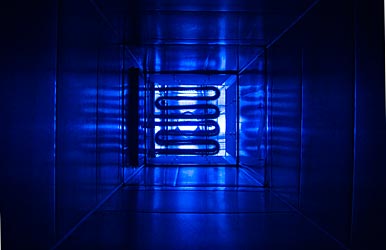The biggest strain on our electricity networks right now – and the cause for at least one third of the $45 billion network upgrades, and at least half of the recently announced tariff increases – are the “super” peak demand periods triggered when everyone returns home from work and flicks on their air conditioning.
In some states this might only occur for a few hours a year, more in others, but network operators have been at a loss to address the issue, apart from building more capacity. Other solutions have been offered – demand management being one of them – but what if the network operators could turn to solar-powered air conditioners as the solution to reduce peak load?
This possibility is being pursued by the CSIRO in a joint $570,430 project with GWA and Queensland utility Ergon Energy, and supported by the Australian Solar Institute. The idea is a counter-intuitive one – effectively using an intermittent resource – solar powered air conditioning – to create a “firming” solar resource which can respond to support the electricity grid during times of stress.
How would this work? First it’s necessary to understand the solar air-con technology that has been developed by CSIRO. It uses panels similar to those used for solar hot water, to collect the sun’s heat as hot air, and uses this in turn to create cool air – a strange-sounding idea, but one that is really no stranger than the old kerosene fridges.
CSIRO want to install these devices as a retrofit on houses (with gas backup), and couple with an energy management device that links back to the grid operator. It will work on the same principle as off-peak hot water systems, except in this instance the signal will instruct the air-con driven by electricity to be switched off, replaced with the solar source or, if no sun, by a gas source.
“Air-con demand is a huge problem in Australia,” says Daniel Rowe, the project leader in the Demand Side Energy Systems group at CSIRO. “Renewables are intermittent, and utilities and power engineers want reliability, but we think we can transform renewable energy technology – solar cooling – into firm demand reduction that is callable by the network. This is about making link to utility during those few hours a year that really count and make it something they can rely upon.”
Rowe says the CSIRO is currently going through the commercialization process of its solar cooling technology. This project, which will be road-tested in three houses in Queensland, will test the ability for the technology to shift the air conditioning load to solar and gas when the network needs it, while keeping the occupants comfortable.
“Solar cooling is coming along in leaps and bounds in Australia – without going into too much technical detail, the technology works really well in humid and sunny climates – and that characterises Queensland,” Rowe told RenewEconomy.
“The end game for this sort of technology is instead of having to upgrade the network in certain areas – and hitting capacity constraints – maybe the grid operators can look at other interesting ideas. There could be real incentives to putting in solar air-con with this type of technology and allow the utilities to shift loads.
Rowe says that if the project is successful, it is anticipated that this firm solar air conditioning system could achieve widespread uptake as a utility-friendly solar solution. And it would likely be preferable to business-as-usual electrical network upgrades and allow energy utilities to redirect expenditure toward generation plant, rather than distribution infrastructure.







